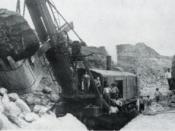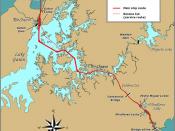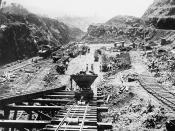The history of the Panama Canal goes back to 16th century. They had to find a way to reach Spain from Asia. the trips would be made shorter by making a canal somewhere in Panama. The canal was drawn up in 1529. Wars in Europe put it on hold.
Alexander von Humboldt brought new interest to the construction in the 1800's. the California Gold Rush brought more interest into it.
Only two routes were practical, the one across Panama and another across Nicaragua. In 1876 an international company was organized. Two years later it got permission from the Colombian government to dig a canal. The international company failed, and in 1880 a French company was organized by Ferdinand Marie de Lesseps, the builder of the Suez Canal.
In 1879, Lesseps proposed a sea level canal through Panama. With the success he had with the construction of the Suez Canal in Egypt, he was confident he would make the canal work.
It wouldn't take as long to travel from the Atlantic to the Pacific ocean. Although de Lesseps was not an engineer, he was appointed chairman for the construction of the Panama Canal. Upon taking charge, he organized an International Congress to discuss several schemes for constructing a ship canal.
In 1899 the US Congress created an Isthmian Canal Commission to examine the possibilities of a Central American canal and to recommend a route. The commission first decided on a route through Nicaragua, but later reversed its decision. The Lesseps company offered its assets to the United States at a price of $40 million. The United States and the new state of panama signed the Hay-Bunau-Varilla treaty, in which the United States guaranteed the independence of Panama and secured a lease on a 10-mile strip for the canal. Panama...


